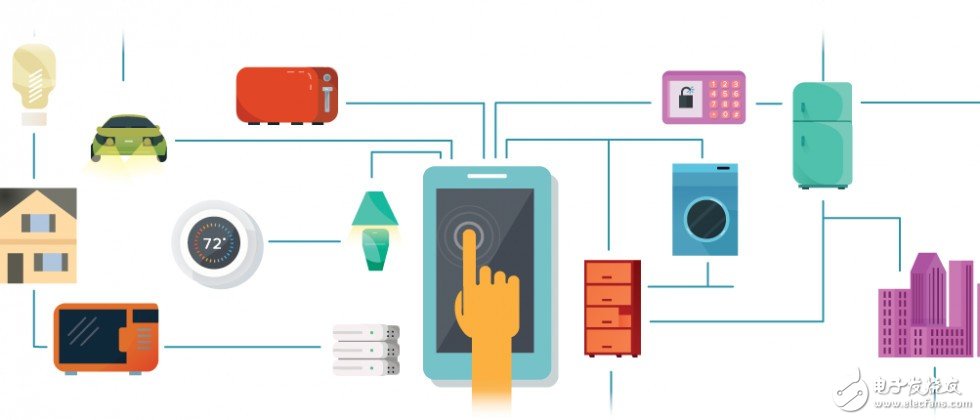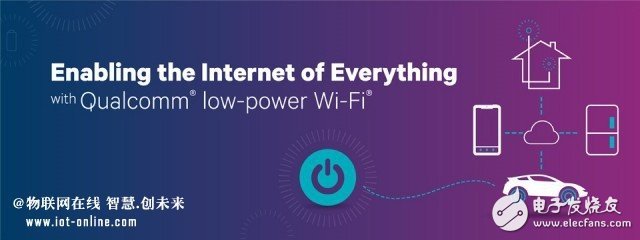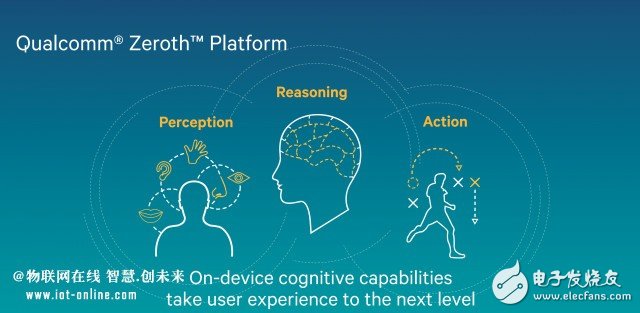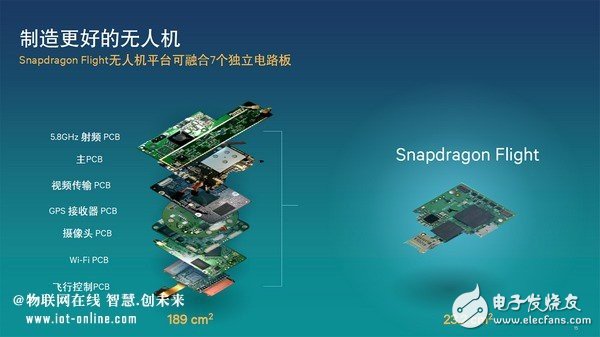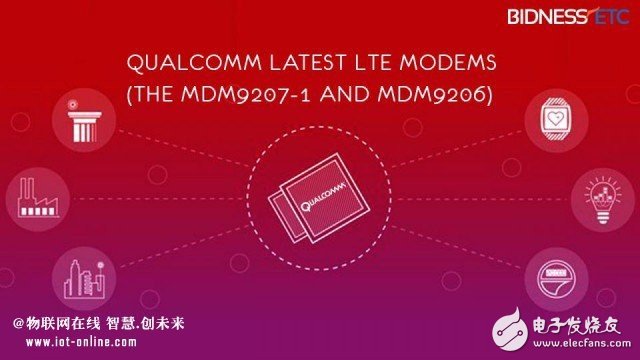Qualcomm hopes to provide the industry with an intelligent platform for all things, laying the foundation for the Internet of Everything. Qualcomm always has a cooperative attitude and actively cooperates with partners, customers, agents, and other partners in the ecosystem, as well as partners of cloud platforms, such as Tencent, Ali, and JD. Extensive cooperation will also be carried out on a global scale, and through the joint efforts of all of you, the Internet of Things platform will be built more quickly. In 2002, digital communication technology redefines the phone, and the personal mobile phone market began to rise. In 2010, mobile Internet technology redefines computing, and smartphones and planes are eroding the market of traditional PCs. Now, new technologies redefine everything. It is 'expanding the Internet border'. When everything is connected, the impact they have on our lives is like the impact of mobile phones on computers. This is an opportunity we are facing now, but there are still many challenges to seize this opportunity. How is everything connected? Basically rely on "connected" Qualcomm expects shipments of non-mobile networked terminals to exceed 5 billion by 2018. The Internet of Everything encompasses a variety of vertical areas and market segments: smart cities, healthcare, networking equipment, automotive, smart homes, mobile computing terminals, and a wide range of wearable devices. For Qualcomm, the Internet of Everything is already a significant market – in FY2014, Qualcomm’s non-mobile segment revenues exceeded $1 billion; in FY2015, Qualcomm expects this number to grow to $1.6 billion; IoE products with integrated Qualcomm technology have shipped more than 100 million. To achieve the Internet of Everything, you need to have some basic conditions: First, in order to realize the interconnection of all things, two elements of wireless connection technology and intelligent product combination are needed. Second, the core of the Internet of Things is "wireless connectivity," which is difficult to implement because the Internet of Things often has "complex and competing connectivity requirements." Third, the development of IoE is not only about the growth of the number of terminals, but also the diversity of terminal applications and how to meet this diversity. How do connection combinations and smart combinations work together in more specific application areas? In general, Qualcomm will look at three parts: smart objects, such as wearable devices, cameras, etc.; smart cities and smart homes. How to meet the diversity of terminal applications? For example, in terms of interconnection, high density and high throughput are required, while low power and low latency are required; high speed and high stability are required; large and complex machine connections are required, and some terminals like light bulbs are needed. Connections... This complex and competing connection requirement is a real problem to be solved. In order to grasp the core of wireless connectivity, Qualcomm's idea is to broadly integrate wireless technologies in the initial stage, including 4G LTE, 3G, Wi-Fi and Bluetooth technologies. The next step is to provide new service categories, control and exploration as much as possible, and ultimately create an integrated connectivity platform, an intelligent network that connects everything. Not long ago, Qualcomm just completed the acquisition of Bluetooth chip maker CSR, and it is even more powerful in Bluetooth connectivity. In terms of WIFI, Qualcomm also strengthened after acquiring Qualcomm Atheros. Looking closely at Qualcomm's strategy, it is not difficult to find that the Internet of Everything is basically connected. In the past, Qualcomm could only dominate the wireless wide area network (WWAN). Today, Qualcomm already has wireless local area network (WLAN), wireless personal area network (WPAN), and of course Qualcomm. The best of both worlds - chips, differentiated software, application processor technology for the Opteron platform, and the ecosystem of the entire software supported by Qualcomm. How to make the terminal smarter? Like a person, "cognition" The first step in the interconnection of all things is to connect, and the second step is to be able to interact. The so-called intelligence, taking a mobile phone to control a thing, is better than the original, but from a smart point of view it is still relatively foolish. It requires interaction. Interaction means that there is no human intervention between a device and another device, and it can make a smarter decision that it should do. Inspired by the human brain, Qualcomm is currently pushing the intelligence of the terminal to a new level. In the morning, the networked alarm clock informs you to get up, the mobile phone informs the scheduled ticket; after the trash can is full, it has sent a message to inform the automatic garbage truck, yes, it is still a Wi-Fi hotspot... This software and hardware platform will revolve around Qualcomm Dragon system-level chip construction, which also has "personality" and cognitive ability. This gives us a whole new set of possibilities – the human perception model matches smartphones, robots and other devices that interact with us. Perceive, think through thinking, analyze the environment, and ultimately make an instinctive response. If the terminal learns this, in addition to bringing a new user experience, it can also improve security and privacy. Regarding "cognition," Qualcomm has made a breakthrough in its "brain-inspired computing" research project called Zeroth in recent years. To date, deep learning networks have been discussed and studied primarily in the context of cloud or high-performance CPU and GPU computing clusters. The Zeroth team has implemented a large deep neural network running on the Qualcomm Snapdragon mobile system chip. Specifically, on the Internet of Things terminals, there are the emergence of drones, smart cameras, and intelligent street lighting. Earlier, Qualcomm introduced the Snapdragon Flight reference board for consumer-grade UAVs and robotics applications. Currently, drones provide independent shooting, navigation and communication solutions from multiple component suppliers, increasing the cost and size of consumer drones. Snapdragon Flight integrates technologies that define the mobile industry onto a single reference board to design drones that are lighter, smaller, easier to use, cost-effective, and durable. Qualcomm first used technology in smartphone cameras, and security monitoring became a broader test field for Qualcomm 4K. Qualcomm has launched the Snapdragon 618 network camera reference design and development platform. The platform combines leading processing, connectivity, imaging and analysis technologies to support a more powerful, smarter and more professional security camera. Qualcomm calls it "autonomous camera" that not only transmits 4K HEVC, but also enables camera image analysis, such as target detection, face detection and recognition, multi-target tracking, and Qualcomm Zeroth target classification. With intelligent camera recognition, customers can no longer be constrained by high-cost, server-based cloud-based video analysis, turning to more reliable, camera-based analysis. Qualcomm introduced the latest LTE modems MDM9207-1 and MDM9206 during IoE Day. The biggest advantage of these two LTE solutions is that they have smaller size and lower power consumption, which can be used in multiple scenarios of IoT applications. The MDM9207-1 is designed for IoT applications such as smart meters, security, asset tracking, wearables, point of sale, and industrial automation. The MDM9206 will optimize terminal manufacturer costs and provide ultra-low power and extended range for the latest IoT LTE standards Cat-M (eMTC) and narrowband Internet of Things (NB-IOT), as well as more efficient service with narrowband modems. Low data rate IoT applications. What is the use of object recognition in the camera? This is equivalent to the past we need to see the entire Conan film to know who the murderer is. And if you use the Qualcomm Snapdragon 618 security camera, then the murderer will be marked by the red circle in the first few minutes of the movie. Such a design can be imagined for the efficiency improvement of security. Y11 Milk White Shortwave Antenna,Y11 Milk White Omnidirectional Antenna,Y11 Milk White Transmitting Antenna Mianyang Ouxun Information Industry Co., Ltd , https://www.ouxunantenna.com